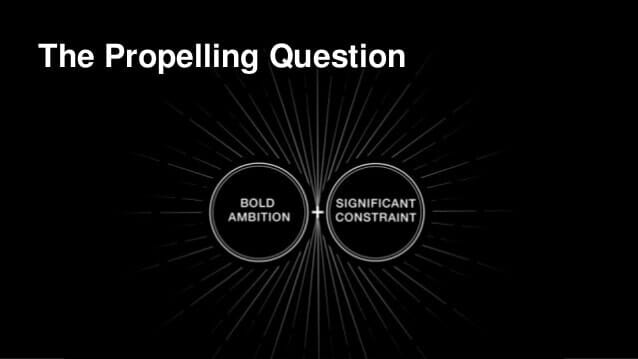Human-centered, empathetic design. In school communities.
Using this process, you can approach school challenges confidently. You can cultivate creativity and forward momentum in your school.
For years, I had a ‘design for thriving’ task force in my school. It included student, parent, teacher, administration, and community voices. First, we considered projects and initiatives for thriving. Then, we planned how to operationalize them. Finally, we iterated.
It was never done, just in process.
Designing for thriving is a core value of our village.

Empathize
Let’s consider a real-life issue of today…
Possibly you have experience with…
For instance, teachers are floundering, morale is low, people are burnt out, complaints are high. Viscerally, you empathize with the state of Denmark. Added, you look at the research on teacher morale and school culture.
You are trying to feel into the powerful emotions empathetically to consider the problem.
“It is the leader’s role both to communicate a clear sense of the ambition and to elevate the emotional commitment to it within his team.”
A Beautiful Constraint — How to Transform Your Limitations Into Advantages, and Why It’s Everyone’s Business, Adam Morgan & Mark Barden
At this point, I always leaned into members of my leadership team: teacher-leaders or administration, to incorporate their empathetic analysis of an issue.
I checked in with people and listened to their hearts.
Define
‘Clear is kind.’ Indeed, getting abundantly clear about the problem is essential. What are the factors and how can we frame the problem, challenge, or question to support our design process.
Next, focus on asking powerful questions. You might even want to make a list of as many questions as you can about the issue for new insights.
Then, crystallize the definition of the problem you’re trying to solve.
For example,
“System (or societal) level problems require system-level solutions. Due to massive disruption in society and education, the resulting and uneven impact on students (particularly the vulnerable), along with incredible uncertainty for the past two years, educators need more school-based support to thrive in their work.
In the remainder of this year, how will we design for thriving in this new reality?”
Ideate
I love this step! This is where your teamwork, creativity, and processes can crawl outside of the box and do a little dance!
Of note, this step may even overlap with the last one, as the questions you’re asking are key.
Use your favorite ideating strategy, brainstorm or brain-write, with a variety of stakeholder(s) groups. Bonus points if you include:
- students,
- parents,
- two or three people who have no direct experience with the problem,
- or those whose cognitive style or worldview is starkly different from yours.
For more information, consider Better Brainstorming – Focus on questions, not answers, for breakthrough insights.
Also, remember, design loves constraints. Don’t be afraid to add a budget, a time-key, or a human resource limitation.

“Propelling questions bind a bold ambition to a significant constraint. The solution has to make use of the constraint, denying us what would make the answer easier, ensuring that we address real challenges and not indulge in blue-sky fantasies.”
A Beautiful Constraint — How to Transform Your Limitations Into Advantages, and Why It’s Everyone’s Business, Adam Morgan & Mark Barden
Now, we turn to curiosity and the climate is conversational. The objective is to get to ‘flow.’
Additionally, Colin Kelly, Director of Research and Development at a UK bakery that scaled to be a brand leader in 20 years developed a particularly salient problem-solving strategy. He invited team members to integrate a new approach by beginning sentences with “We can if…,” instead of “We can’t because….”
This conversational strategy helps us move to the next phase.
Prototype
In this phase, we want to design a prototype to trial or pilot in the short term.
In the case study on educator wellness, this may be a multi-faceted approach including several short-term initiatives. To help, I put together a brainstorm of domains and ideas for structural supports for educator wellness. Furthermore, this Edresearch for Recovery Brief outlines the essential role school leaders play in this process.
Also, in this step, define how you will measure success.
- What data do you have already?
- Will we gather before and after data?
- How will you gather data?
- How will you make the data transparent?
Test
Finally, in the ‘Test’ phase, document how you will operationalize these solutions as a team. Additionally, how you will assess the solutions.
Eventually, you will want to circle back to evaluate the efficacy of your design. At that time, you may need to re-enter the ideate phase. Ideally, this cycle continues until your design achieves the desired results.
In conclusion, designing for thriving is a culture you embed into your community. It is a Learn Forward™ stance, with a communal growth mindset in the roots.
You are never done, always just designing. I found it usually took 3 years to make sustainable change. Ultimately, we engage in adaptable leadership.
For the sake of the students,
Karine
PS If you want to more about becoming a Learn Forward™ school, check out the EdLeadership Peak Training!


